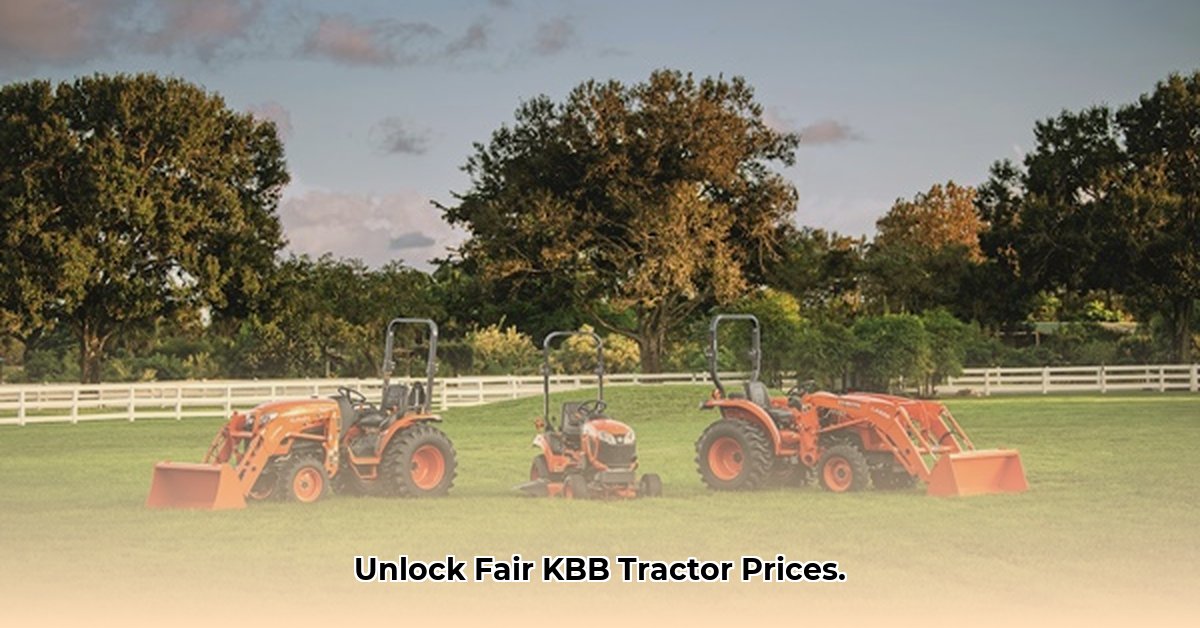
The Challenge of Valuing Sustainable Farm Equipment
Finding the fair market value of used sustainable farm equipment presents unique challenges. Unlike cars, where resources like Kelley Blue Book provide readily available pricing, a centralized, free, and universally trusted valuation system for sustainable agricultural machinery is lacking. This lack of transparency creates difficulties for both buyers and sellers, especially those committed to environmentally friendly farming practices. How, for instance, do you accurately price a precision agriculture system, or machinery utilizing renewable energy sources? This is a critical question for the industry. Do current valuation methods adequately capture the environmental benefits of these technologies? For additional resources, check out this tractor value guide.
Where to Find Pricing Information (and Its Limitations)
Several sources offer pricing information, but each has limitations:
Online Marketplaces (e.g., Craigslist, Facebook Marketplace): These platforms offer broad reach but suffer from wildly inconsistent pricing and a lack of verification. Buyer beware: thorough inspection and verification of seller claims are crucial.
Specialized Equipment Listings (e.g., Fastline): While these often provide more reliable information, subscription fees can limit accessibility.
Online Forums (e.g., MyTractorForum): These forums facilitate valuable networking and advice, but user-generated pricing data remains inconsistent and unreliable. Consider this information a general guide, not a definitive valuation.
The lack of a centralized, free database is a significant impediment to market efficiency. This is especially true when considering the specialized, often less common, technologies employed in sustainable agriculture. Isn't it time for a better solution?
What Makes Sustainable Equipment Different?
Sustainable farming equipment presents additional complexities. New technologies, such as precision farming tools or renewable energy systems, lack established market benchmarks. Furthermore, the environmental benefits—reduced chemical usage, lower carbon footprint—should ideally influence price. However, current valuation systems rarely incorporate these crucial factors. Dr. Emily Carter, Professor of Environmental Engineering at Cornell University, notes, "Quantifying the environmental impact of agricultural equipment remains a challenging but critical area of research.” This is a major barrier to market transparency.
Smart Steps for Sustainable Farmers
Here's a practical, actionable framework for navigating used equipment pricing:
Short-Term Strategies (within 1 year):
- Explore Free Trials: Many valuation services offer free trials; utilize these to assess their usefulness.
- Cross-Reference Data: Gather pricing information from multiple sources; look for consistent patterns to refine your estimate.
- Network with Peers: Connect with other sustainable farmers to share information and insights.
- Advocate for Change: Support initiatives promoting free, accessible valuation databases.
Long-Term Strategies (over 3 years):
- Demand Transparency: Insist on clear pricing from equipment dealers and negotiate effectively.
- Support Open Data: Back projects creating publicly accessible valuation resources.
- Participate in Data Sharing: Contribute to data-sharing initiatives to enhance market transparency.
Isn't collective action crucial to establishing better valuation standards?
Key Takeaways: Valuing Sustainable Farm Equipment
- Accurate valuation of used sustainable agricultural equipment is essential for effective decision-making.
- Online platforms provide automated valuations, but inconsistencies and limitations exist.
- A multi-platform approach, incorporating market research and physical inspection, optimizes accuracy.
- Regular valuation tracking enhances financial planning.
- Data transparency and standardization remain crucial for improving market efficiency.
This article provides a clear roadmap to navigate the complexities of valuing used sustainable farm equipment. By employing these strategies and advocating for broader industry changes, farmers can make informed purchasing decisions that support their sustainability goals.